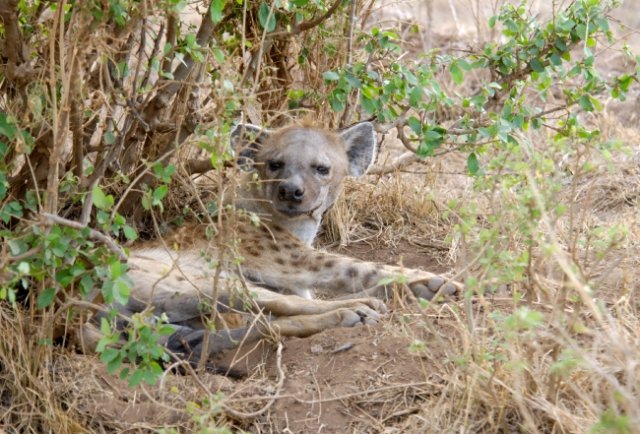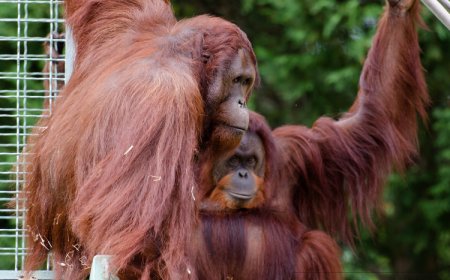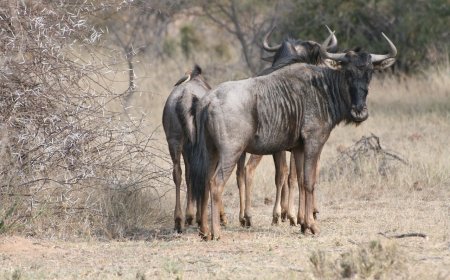All About Hyenas for Students: Nature’s Misunderstood Mammals
Learn all about hyenas in this fun and educational guide for students. Discover their social skills, hunting habits, and role in African ecosystems. Includes fun facts, vocabulary, and a quiz!

🐾 Hyenas: Nature’s Misunderstood Mammals (Expanded Edition)
📚 Scientific Name and Classification
- Common Name: Hyena
- Scientific Names:
- Crocuta crocuta (Spotted hyena)
- Hyaena hyaena (Striped hyena)
- Parahyaena brunnea (Brown hyena)
- Family: Hyaenidae
- Order: Carnivora
Even though hyenas look like dogs, they are not canines. They belong to their own family and are more closely related to cats and mongooses than to wolves or foxes. There are four types of hyenas: spotted, striped, brown, and the tiny, insect-eating aardwolf.
🌍 Habitat and Geographic Range
Hyenas live in a variety of environments, including:
- Savannas
- Grasslands
- Woodlands
- Scrublands
- Deserts
Spotted hyenas are found mostly in sub-Saharan Africa, while striped hyenas live across North Africa, the Middle East, and parts of Asia, and brown hyenas are found mainly in southern Africa.
Hyenas are extremely adaptable. They are even found near villages and cities, scavenging for food.
🍖 Diet and Feeding Habits
Hyenas are often thought of as scavengers, but they are also excellent hunters.
Spotted hyenas:
- Hunt in coordinated groups, chasing prey like wildebeest, zebras, and antelope
- Have a success rate equal to or better than lions
- Can eat and digest bones, teeth, and hooves thanks to powerful stomach acids
Striped and brown hyenas:
- More often scavenge leftovers from other predators
- Eat smaller prey, fruit, and even insects
Hyenas play a vital role in the ecosystem as nature’s cleanup crew, preventing the spread of disease by eating animal remains.
🧠 Behavior and Intelligence
Hyenas are among the smartest carnivores in Africa.
- Spotted hyenas live in complex social groups (called clans) of up to 80 individuals.
- They show cooperative behavior, like sharing food and defending their territory together.
- Each clan has a clear hierarchy, with females at the top. In fact, female hyenas are larger, stronger, and more aggressive than males!
They communicate with:
- Vocalizations (growls, whoops, giggles, and moans)
- Scent markings to signal territory
- Facial expressions and posture to show dominance or submission
Studies show that hyenas can solve puzzles, remember individual clan members, and use teamwork to overcome challenges—skills rarely seen in wild carnivores.
🦴 Physical Features and Unique Adaptations
- Weight: Spotted hyenas weigh 90–190 lbs (40–86 kg); striped and brown hyenas are smaller
- Build: Front legs longer than back legs, giving them a sloped appearance
- Jaws and teeth: Incredibly strong—can crack open bones of large prey
- Ears:
- Spotted hyenas have rounded ears
- Striped and brown hyenas have pointed ears
- Speed: Can run up to 40 mph (64 km/h) in short bursts
- Senses: Excellent hearing and smell; can detect carrion from miles away
💡 Spotted hyenas can carry carcasses that weigh over 75% of their body weight!
🍼 Life Cycle and Reproduction
- Mating: Only higher-ranking females choose and mate with males
- Gestation: About 110 days
- Litter: Usually 2 cubs, sometimes 1 or 3
- Cubs are born in underground dens, with teeth and eyes open
Unique feature:
- Spotted hyena cubs are born aggressive—sibling rivalry can be fierce, especially among females, and one may die early if food is scarce
Mothers nurse cubs for up to 18 months, which is long for a carnivore. Cubs may remain with their clan until they are 2–3 years old.
Hyenas can live up to 25 years in the wild and even longer in captivity.
⚠️ Threats and Conservation
Although not endangered, hyenas face growing threats:
- Habitat loss due to farming and urban development
- Conflict with livestock farmers, who may kill hyenas to protect animals
- Misunderstanding and myths, often seen as evil or bad luck
Conservationists are working to:
- Educate local communities about the importance of hyenas
- Promote coexistence between hyenas and livestock owners
- Protect wild habitats with national parks and reserves
💡 Unlike lions, hyenas are often not protected by the same level of laws or tourism support—even though they are just as important.
🎉 Fun Facts About Hyenas
- A hyena’s giggle is not from joy—it’s a sign of stress or submission
- Ancient people in Africa and Egypt kept hyenas as pets or for food
- Hyenas can digest almost anything, including bones, teeth, and skin
- Female spotted hyenas have a pseudo-masculine appearance due to high testosterone levels
- Hyenas have been seen stealing food from lions—and also scaring lions away when in large groups
🧠 Vocabulary List
- Clan – A social group of hyenas, often with many members
- Scavenger – An animal that eats dead or leftover prey
- Carnivore – An animal that eats only meat
- Dominance – The top position or power in a social group
- Territory – The area an animal defends as its home
- Hierarchy – A ranking system within animal groups
- Vocalization – A sound made to communicate
- Adaptation – A feature that helps an animal survive in its environment
- Den – A safe underground place where cubs are raised
- Scent marking – Using smells to communicate ownership of territory
✅ Hyena Quiz: Laugh Your Way to the Top!
- Which hyena is the largest and most social?
A. Striped hyena
B. Brown hyena
C. Spotted hyena
D. Aardwolf - What is a group of hyenas called?
A. Herd
B. Pod
C. Pride
D. Clan - What part of a hyena’s body is used to crush bones?
A. Tail
B. Feet
C. Jaws
D. Nose - Why do hyenas “laugh”?
A. They are happy
B. To confuse prey
C. It’s a sign of stress or submission
D. It’s part of their mating call - What is one big threat to hyenas today?
A. Too much water
B. Habitat loss and conflict with humans
C. Not enough prey
D. Polar bears
🧒 Kid-Friendly Summary: Hyenas
Hyenas are tough, smart, and super social animals that live mostly in Africa. They’re known for their laugh-like sounds and their amazing bone-crushing jaws. Even though people sometimes think hyenas are just sneaky scavengers, many hyenas are skilled hunters and help keep the environment clean by eating leftover animal parts.
They live in clans led by powerful females, and they’re really good at working together. Hyenas may not always get the credit they deserve, but they are important, clever animals with a lot of cool secrets!





















































